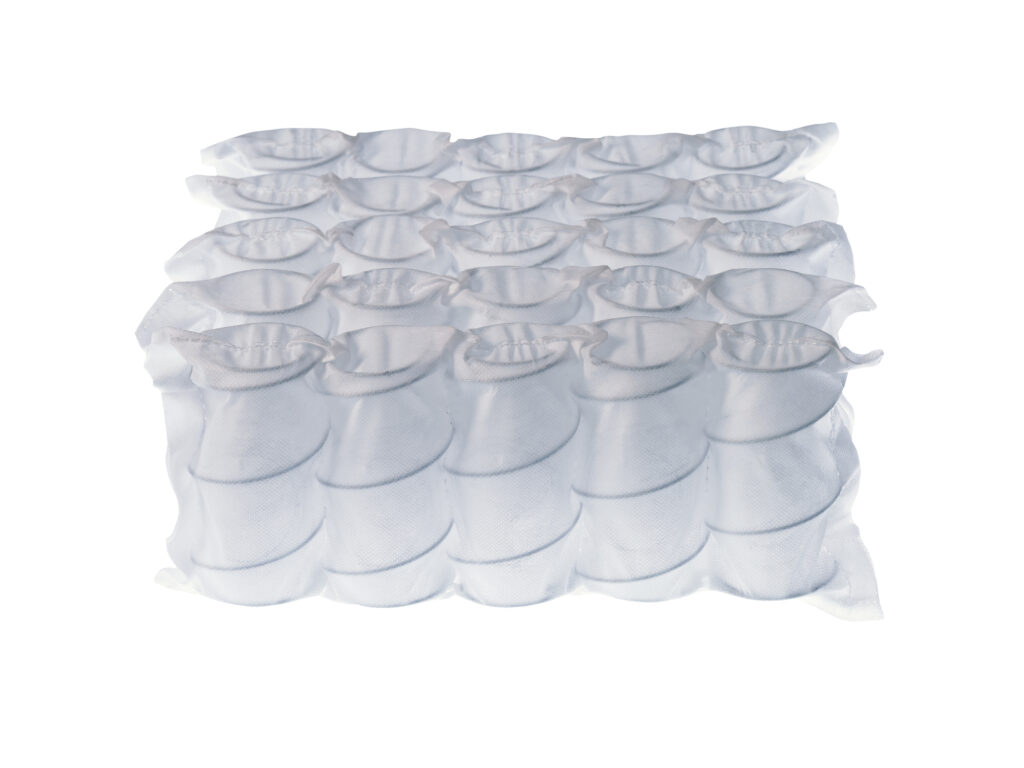Spring Mattress FAQs: Are Pocket Spring Mattresses Good?
Spring mattresses have evolved significantly since their invention in 1871, leading to the current pocket spring, one of the most popular mattress technologies you’ll find today.
In this FAQ we answer common questions about pocket springs, and how to choose the one that’s right for you.
- How pocket spring mattresses work
- The benefits of pocket spring mattresses
- Are pocket spring mattresses compatible with slat bases?
- Pocket spring mattresses compared to foam mattresses
- Are pocket spring mattresses good for back pain?
- Expected lifespan of pocket spring mattresses
- Should you flip a pocket spring mattress?
- Finding the most comfortable pocket spring mattress
What is a pocket spring mattress?
A pocket spring mattress consists of hundreds or thousands of individual heat-tempered steel springs, each housed in a fabric pocket. These pockets are connected together to create the mattress’s support core. Since the springs operate independently, they adapt to the sleeper’s body while reducing motion transfer—unlike traditional interconnected springs, which move as one unit. The pocketed structure offers focused support under pressure points like the hips, promoting proper spinal alignment. Some models may include thousands of pocket springs, zoned configurations, or layered designs with pocket springs of varying heights and diameters.

Are pocket spring mattresses good?
Pocket spring mattresses provide strong support, good airflow, and minimal motion transfer, making them good for back, side, and stomach sleepers. The pocket springs conform to the body to maintain spinal alignment while limiting bounce, and their open-coil design enhances breathability. Well-made pocket springs retain their shape and responsiveness over years, resisting sagging and delivering lasting comfort, which makes them a smart long-term investment for both sleep quality and spine health.
Which is better, a foam or a pocket spring mattress?
Both have advantages: pocket springs have good airflow and offer responsive, targeted support, while memory foam has a snug, contouring feel with superior pressure relief. Hybrid mattresses, which blend both materials, are increasingly popular for their balance of responsiveness and cushioning comfort.
How often should you replace a pocket spring mattress?
With proper care, a well-made pocket spring mattress should last 10 years – premium models even longer. Simple maintenance, like rotating periodically, spot cleaning when needed, and using a protective cover (with an optional topper for extra cushioning), can extend this lifespan. When well maintained, most pocket spring mattresses deliver comfortable support for 10-15 years before needing replacement.
Are pocket spring mattresses bad for side sleepers?
Not at all! A good pocket spring mattress combines soft comfort layers with zoned support that helps keep your spine aligned. They often feature softer springs under heavier areas, like shoulders and hips, to ease pressure when you’re sleeping on your side. It’s worth going into store to test mattresses in your usual sleep position to make sure you choose one that’s not too firm and has enough cushioning to keep you comfortable.
What type of spring mattress is best?
The best spring mattress for you will depend on your specific sleep needs. If you want a quality Australian-made mattress with comfortable support and reduced partner disturbance, we have a wide range of spring models available. If you suffer from back pain, look for a mattress with Miracoil technology to help maintain proper spine alignment. And if you’re after the best-of-the-best, check out our Cocoon range, which combines premium materials and advanced temperature regulation with the Sensorzone support core for unbeatable comfort and support.
Should you flip a pocket spring mattress?
Nearly all pocket spring mattresses feature strong support layers at their base with plush comfort materials on top.

These are one-sided designs that aren’t meant to be flipped. Doing so might damage the mattress (and potentially your back!), leaving you to sleep on the much firmer, much less comfortable bottom of the mattress. Rather than flipping your mattress, follow the manufacturer’s guidelines for turning the mattress in the first few weeks, then rotate it end-to-end every few months to distribute wear evenly.
